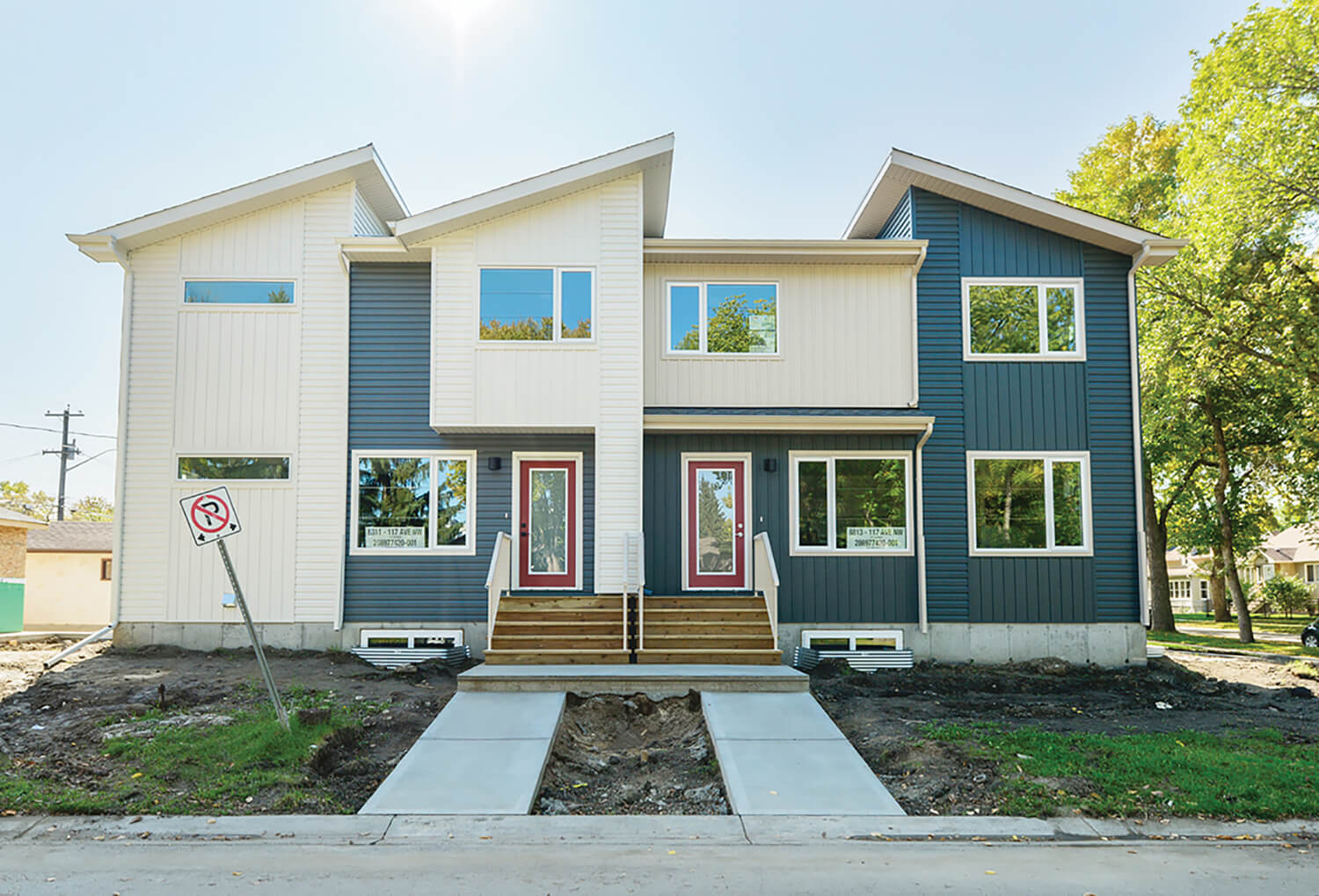At one time not so long ago, talk was of a great condo boom in downtown Edmonton. But that dream has not become reality. The pandemic changed financial realities for some buyers and for others it increased demands for bigger spaces. The Canadian Mortgage and Housing Corporation (CMHC) also took action to curtail debt loads of some home buyers. Adil Kodian, vice president of Rohit Communities, adds that with tightening mortgage rules over the last few years, many first time homebuyers were squeezed out of the market, disproportionally affecting the entry level apartment-style condo. At the same time, the CMHC created incentives to encourage affordable housing development. In this way, the condo boom became a rental boom.
While downtown Edmonton’s apartment-style condo market has been changed by policy and pandemic impacts, Kodian says the Edmonton townhome market sees growth. “Townhomes are a midpoint that actually is the ideal compromise between affordability and needs.”
In a post-oil economy where sustainability and 15-minute neighbourhoods are valued, townhomes may be the way of the future.
The Missing Middle
Townhomes — think Manhattan’s brownstones or Toronto’s brick rowhouses — have largely been an absent market segment in Edmonton. In 2019, the city’s Missing Middle Zoning Bylaw Review highlighted this absence and led to multiple zoning changes. Now, more than ever, developers have more flexibility to build diverse multi-unit housing options in neighbourhoods across the city.
Developers like Vida Nova Homes are building infill in the core where changes to the RF1 zoning, traditionally reserved for single-family homes — now make it possible to build multi-family housing on these properties (with permission). Jordan Seitz, Vida Nova’s sales and operations manager, says he meets many first-time buyers in their 20s and 30s, some with young families, looking to buy something new and central. “They feel like the value in the core of city will be higher over time.”
